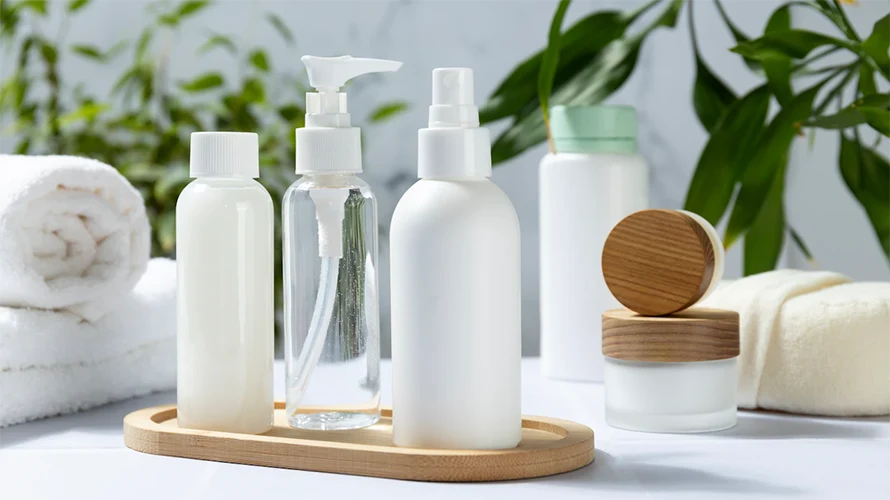As consumers, we use cosmetics and personal care products every day, from shampoo and body wash to makeup and skincare.
But have you ever thought about what happens to the packaging once you’re done with the product?
Unfortunately, cosmetics packaging waste is a growing problem, with many products ending up in landfills and oceans.
Fortunately, there are ways to recycle and repurpose cosmetics packaging to minimize the impact on the environment.
In this blog post, we’ll explore how to recycle cosmetics packaging in detail.
Know What Can Be Recycled
Firstly, it’s essential to know which types of cosmetics packaging can be recycled. Common materials include plastic, glass, and metal. However, not all types of plastics can be recycled, and it’s crucial to check with your local recycling program for specific guidelines.
Generally, most curbside recycling programs accept plastic bottles, jars, and tubes made from polyethylene terephthalate (PET), high-density polyethylene (HDPE), and polypropylene (PP). Glass bottles and jars are also recyclable in most areas. Metal packaging, such as aluminum cans or steel tins, can also be recycled.
It’s worth noting that certain types of cosmetic packaging, such as pumps, caps, and droppers, may have mixed materials, making them more challenging to recycle.
In some cases, it’s best to remove the pump or cap and recycle the remaining packaging. Similarly, paper or cardboard packaging, such as product boxes, can be recycled in paper recycling programs.
Cleaning and Preparing Packaging for Recycling
Once you’ve identified which packaging can be recycled, the next step is to prepare it properly for recycling. It’s essential to clean packaging before recycling it to avoid contamination of other recyclables.
Rinse plastic bottles and jars, remove any leftover product or residue, and let them dry.
For glass and metal packaging, it’s best to remove any labels or adhesive residue to avoid contamination. You can use warm water, soap, and a scrub brush or a cloth to remove labels and adhesive.
For tubes and other flexible plastic packaging, it’s best to cut them open to remove any leftover product and rinse them out.
After cleaning, it’s crucial to separate any components of the packaging, such as lids or pumps, as they may require different recycling processes.
Some programs may not accept certain components, so it’s best to check with your local recycling program for specific guidelines.
Recycling Options
The next step is to find the right recycling program for your cosmetics packaging. Many curbside recycling programs accept common types of cosmetics packaging, such as plastic bottles and jars.
Some cities also offer specialized recycling programs for other types of packaging, such as plastic bags or foam packaging. It’s crucial to check with your local recycling program to see which types of cosmetics packaging they accept and how to prepare them properly for recycling.
If your local recycling program doesn’t accept cosmetics packaging, there are alternative recycling options. Some cosmetic brands offer their own recycling programs, where you can send your used packaging to them for recycling. TerraCycle is another company that specializes in recycling hard-to-recycle materials, such as flexible plastic packaging and beauty product packaging.
Reusing Packaging
Another way to reduce the impact of cosmetics packaging waste is to repurpose it. Many types of cosmetics packaging can be reused for other purposes, such as storing small items or organizing your vanity. Glass jars and bottles can be used as vases, pencil holders, or for storing loose change. Empty compacts and tins can be used to store jewelry or small items.
Plastic packaging can also be repurposed. For example, you can use plastic bottles as planters, or turn them into bird feeders or watering cans. Empty makeup containers can be used to store bobby pins, hair ties, or travel-sized toiletries. Get creative with your repurposing and see how you can make the most of your cosmetics packaging.
Upcycling Packaging
Another way to reuse cosmetics packaging is through upcycling, which involves transforming it into something new and valuable. Upcycling is a creative way to give new life to old packaging, and it’s a fun DIY project to try at home. For example, you can turn empty shampoo bottles into colorful flower vases, or create a makeup brush holder out of a used candle jar.
If you’re not sure where to start with upcycling, there are plenty of resources and tutorials available online. Pinterest and YouTube are great places to find inspiration and step-by-step guides for upcycling cosmetics packaging.
Reducing Packaging Waste
In addition to recycling, reusing, and upcycling cosmetics packaging, there are steps you can take to reduce packaging waste in the first place. One way is to choose products with minimal packaging or packaging that is easily recyclable. Look for products that come in glass or metal packaging, as these materials are easier to recycle than plastic. You can also choose products that come in refillable packaging, such as shampoo and conditioner bars or makeup palettes with refillable pans.
Another way to reduce packaging waste is to buy in bulk. Many beauty and personal care brands offer bulk sizes of their products, which can reduce the amount of packaging waste over time. You can also buy products from companies that prioritize sustainability and eco-friendly practices, as they may have more environmentally-friendly packaging options.
Conclusion
In conclusion, cosmetics packaging waste is a growing problem, but there are many ways to recycle, reuse, and upcycle packaging to reduce its impact on the environment. It’s important to know which types of packaging can be recycled and how to prepare them properly for recycling.
If your local recycling program doesn’t accept cosmetics packaging, there are alternative recycling options available. You can also repurpose packaging for other uses or upcycle it into something new and valuable.
By taking these steps and choosing eco-friendly products, we can all play a part in reducing cosmetics packaging waste and creating a more sustainable future.

Lucas Ji, Founder of UKPACK and Chief Packaging Designer, has 15 years of experience designing sustainable packaging for global beauty and beverage brands. His Red Dot Award-winning solutions have helped 50+ premium brands transition to eco-friendly packaging.

